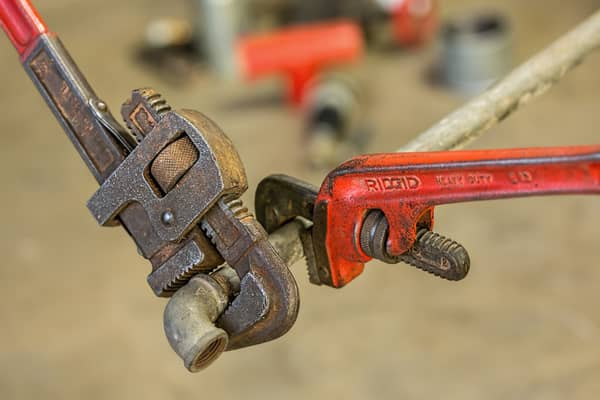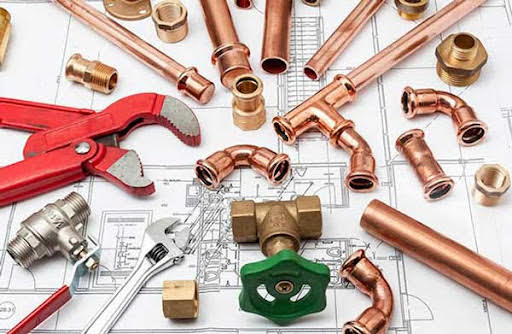Obtaining Insight into Home Plumbing Basics: A Beginner's Introduction
Obtaining Insight into Home Plumbing Basics: A Beginner's Introduction
Blog Article
This article following next about Plumbing basics: How your home plumbing works is fairly insightful. Don't bypass it.

Plumbing is an essential facet of any type of home, in charge of supplying tidy water for alcohol consumption, cooking, and bathing, as well as removing wastewater safely. Recognizing the basics of home plumbing is important for each house owner to guarantee appropriate maintenance, troubleshooting, and, if required, repairs. In this beginner's guide, we'll cover the essential ideas of home plumbing to assist you become much more familiar with exactly how it works.
Water Furnace
The water heating system is accountable for home heating water for residential usage, consisting of showering, food preparation, and cleaning. Common kinds of hot water heater consist of tank-type water heaters, tankless (on-demand) water heaters, and heat pump water heaters. The water heater is connected to the water system system and delivers hot water to plumbing components as needed.
Water drainage System
The drain system removes wastewater from your home and brings it away to a sewer therapy center or septic tank. It includes a network of pipes, installations, and components that move wastewater from plumbing fixtures to the major sewage system line or septic tank. Correct water drainage is necessary to avoid clogs, backups, and sewage leakages.
Air flow System
The ventilation system assists maintain correct air pressure and protect against sewer gases from entering your home. Vent pipes, additionally referred to as vent heaps, extend from plumbing fixtures to the roof covering, allowing sewer gases to run away securely outdoors. Air flow pipelines also allow air to go into the water drainage system, facilitating smooth wastewater flow and protecting against suction or vacuum cleaner impacts.
Supply Of Water System
The water system brings clean water into your home from a community water resource or an exclusive well. It includes a main water line that links to your home's plumbing system, normally situated underground. A water meter gauges the quantity of water consumed, while a shut-off valve permits you to regulate the flow of water into your home.
Plumbing Fixtures
Plumbing fixtures are devices that provide water to numerous parts of your home and consist of sinks, taps, bathrooms, showers, tubs, and devices such as dishwashers and cleaning equipments. Each fixture is linked to the water system system via pipelines and installations and may have its shut-off shutoff for maintenance or emergency situations.
Common Plumbing Devices
Having the right tools handy is vital for performing basic plumbing repair services and upkeep tasks. Usual plumbing tools include flexible wrenches, pipe wrenches, pliers, pipe cutters, hacksaws, bettors, augers (or drainpipe serpents), and Teflon tape. Having these devices readily offered can help you deal with small plumbing issues successfully.
Basic Plumbing Repair Services
While some plumbing repair work might call for professional help, several common problems can be attended to with standard DIY methods. Knowing how to fix a leaking faucet, unclog a drainpipe, replace a commode flapper, or fix a trickling showerhead can save you time and money on plumbing repair services.
Conclusion
Understanding the basics of home plumbing is essential for every house owner to keep a risk-free, useful, and effective plumbing system. By acquainting on your own with the water system system, plumbing components, drainage system, ventilation system, usual plumbing devices, and basic repair work, you can confidently address minor plumbing problems and ensure your home's plumbing system operates smoothly.
Plumbing for Beginners: A Comprehensive Guide
If you’re a beginner when it comes to plumbing, don’t worry; you’re not alone. Plumbing may seem intimidating, but with the right knowledge and a little practice, you can handle many common plumbing issues on your own. In this comprehensive guide, we will demystify the world of plumbing for beginners, providing you with the basic knowledge and skills needed to tackle common plumbing problems and even take on some DIY plumbing projects.
The Importance of Basic Plumbing Knowledge for Beginners:
First and foremost, basic plumbing knowledge gives you a solid foundation. It helps you grasp the key concepts and terminology that are essential in this field. By learning the basics, you’ll be able to build upon that knowledge and tackle more complex plumbing tasks in the future.
Having a basic understanding of plumbing also enables you to handle common issues that may arise in your home. Picture this: a leaky faucet or a clogged drain. With some basic plumbing knowledge, you’ll have the confidence to troubleshoot and fix these problems on your own. It saves you from unnecessary expenses and the hassle of waiting for a professional to arrive.
As a beginner, learning the basics of plumbing empowers you to take care of your own home. It gives you a sense of independence and self-reliance. You’ll no longer have to rely solely on professionals for every small issue that pops up. Instead, you can handle many tasks yourself, saving time and money in the process.
Remember, everyone starts as a beginner. Embrace the learning process and take small steps to expand your plumbing knowledge. There are plenty of online resources, tutorials, and even local workshops that talk about plumbing for beginners.
Essential Tools for Plumbing for Beginners
As you start your plumbing journey, having the right tools in your toolbox is crucial. Let’s explore some of the must-have tools:
Adjustable Wrench:
This versatile tool is a staple in any plumber’s toolbox. It allows you to tighten or loosen nuts and bolts of various sizes. Make sure to have an adjustable wrench with a comfortable grip.
Pipe Wrench:
A pipe wrench is specifically designed for gripping and turning pipes. It has serrated jaws that provide a strong grip, making it easier to loosen or tighten threaded pipes and fittings.
Plunger:
The plunger is a simple yet effective tool for clearing clogged drains and toilets. It creates suction when you push and pull, helping to dislodge blockages. Keep a good-quality plunger handy for those unexpected clogs.
Pipe Cutter:
When it comes to cutting pipes, a pipe cutter is your go-to tool. It creates clean, precise cuts without damaging the pipe. Look for a pipe cutter that can handle the pipe sizes you’re working with.
Hacksaw:
A hacksaw is useful for cutting through pipes, screws, and other materials. It’s a versatile tool that can handle different cutting tasks. Remember to use a blade suitable for cutting metal.
Tape Measure:
Accurate measurements are crucial in plumbing. A tape measure allows you to measure pipe lengths, distances, and dimensions accurately. Opt for a sturdy tape measure that extends a good length.
Pliers:
Pliers come in handy for various tasks, such as gripping, bending, and cutting. Slip-joint pliers with adjustable jaws are great for gripping pipes, nuts, and bolts.

Do you really like more info about Understanding the Basics of Your Home's Plumbing System? Put a remark directly below. We'd be glad to see your responses about this blog. We are looking forward that you visit us again in the future. Sharing is nice. Helping others is fun. I value your readership.
Call Today Report this page